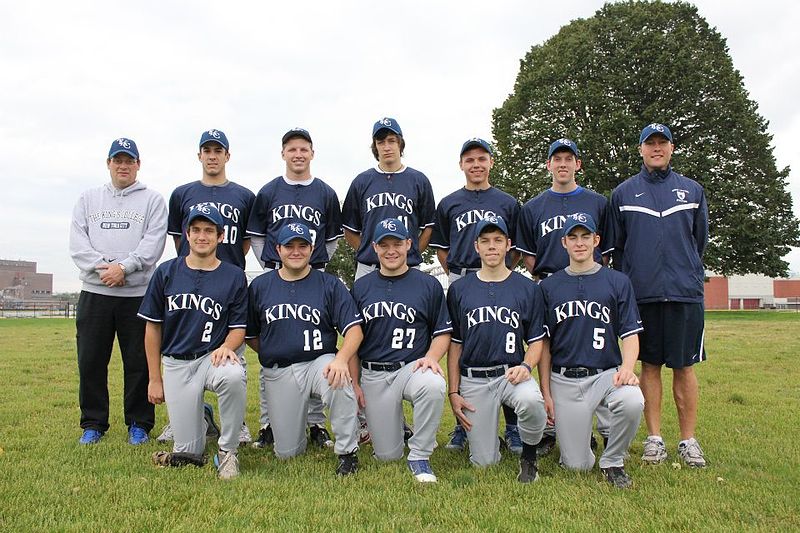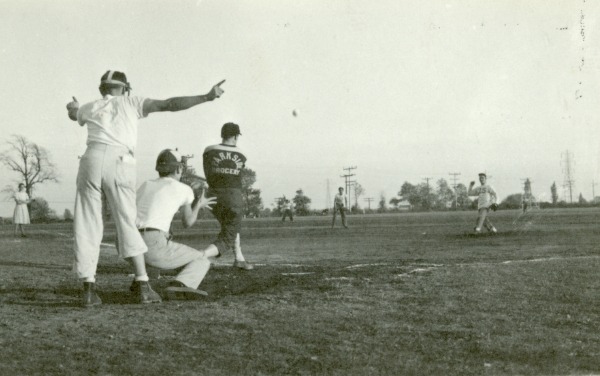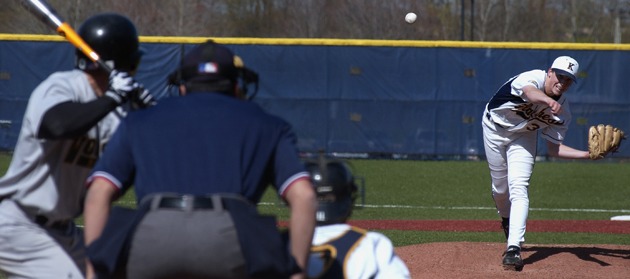Intercollegiate baseball is played in higher education institutions and is referred to as “college baseball.” College competition has less of an impact on professional player development in the United States than it does in basketball and football since baseball’s professional minor leagues are bigger and have a longer history of producing players for Major League Baseball (MLB). Baseball has a higher rate of players making the transition from high school to the professional level than football or basketball do.
Players who choose to enroll in a four-year college must either have attained the age of 21 prior to beginning their third year of study or finish three years of college in order to regain their professional eligibility. After one year at that level, players who enroll in junior colleges (i.e., two-year institutions) recover eligibility. There are currently 301 teams competing in NCAA Division I in the United States, with the top teams moving on to compete for the Division I championship at the 2023 Men’s College World Series after winning the regular season, various conference tournaments, championship series, and the NCAA Division I baseball tournament.
Organization
Competitive college baseball is played under the rules of either the NCAA, NAIA, NJCAA, CCCAA, or NWAC, as is the case with the majority of other intercollegiate sports in the United States. The NCAA establishes the regulations of the game, and each sanctioning organization oversees the season-ending competitions. While each of the three levels of competition recognized by the NCAA hosts a championship tournament, the “Men’s College World Series” branding is exclusive to the Division I tournament’s final round. The Men’s College World Series (MCWS) is the moniker for the NCAA Division I competition.
After the regular season, in June, the CWS is held in Omaha, Nebraska. 64 teams compete in the Division I playoff bracket, with four teams competing at each of the 16 regional venues (in a double-elimination format). Eight cities will host the Super Regionals, which will be contested head-to-head in a best-of-three series, with the 16 winners moving on. The eight champions then move on to the MCWS, a double-elimination competition (really two distinct four-team brackets) to choose the two national champions. A best-of-three series is used to determine the Division I national champion between the finalist teams. Ole Miss is the most recent Men’s College World Series champion.
History
Amherst College and Williams College teams played in the inaugural intercollegiate baseball game on July 1, 1859, in Pittsfield, Massachusetts. Amherst triumphed 73–32. This game was one of the last to be played under the “Massachusetts Rules,” an earlier version of the game that was popular in New England before the “Knickerbocker Rules” (also known as “New York Rules”), which were created in the 1840s, gradually gained popularity. On November 3, 1859, The College of St. Francis Xavier, now known as Xavier High School, and the Fordham Rose Hill Baseball Club of St. John’s College (now Fordham University) played in New York City in the first-ever nine-man team college baseball game under the Knickerbocker Rules still in use today.
Particularly after the Civil War, students at several institutions started planning intercollegiate competitions, initially in the northeast but soon spreading to the rest of the nation. Numerous northeastern universities were participating in regular home-and-home series by the late 1870s. Arguments over professional and graduate players led to the founding of the American College BaseBall Association in late 1879, which consisted of six northeastern institutions and endeavored to regulate such issues and organize games. The team with the greatest record claimed a “National Championship.” This group persisted until it disbanded in waves of realignment and strife in 1887. As multi-sport organizations, the Western Conference and Southern Intercollegiate Athletic Association were established in the 1890s. The first competition to crown a national champion took place at the Chicago World’s Fair in 1893, with Yale taking home the title. Before the 1947 debut of the College World Series, no previous competition of its kind was organized.
College baseball has historically been played in the early months of the year, on a relatively short schedule, and when cold (and/or rainy) weather makes it difficult to play games, especially in the northern and midwestern regions of the United States. These and other considerations have historically caused colleges and institutions all throughout the country to treat baseball as a lesser sport in terms of scholarships, funding, and other areas of importance.
Since the 1980s, college baseball’s popularity has grown significantly. As more efforts to promote the sport led to stronger players and programs overall, more broadcast and print media coverage started to develop.
Since 2003, the ESPN network family has significantly extended its television coverage of the NCAA postseason and the College World Series.
The NCAA imposed the first-ever start date for Division I baseball for the 2008 and following seasons, thirteen weeks prior to the Memorial Day field selection for the NCAA tournament.
Rules
The official baseball regulations and college baseball rules are comparable. Exceptions include the following:
- The bat may be constructed from wood or a composite material that complies with NCAA requirements. Composite bats must now pass the “Bat-Ball Coefficient of Restitution” (BBCOR) test as of the 2011 season.
- It follows the designated hitter rule. A player can also play both pitcher and designated hitter at the same time, and they can stay in one position even after being removed from the other.
- Sometimes a doubleheader will have seven innings on one end or both. But increasingly, the NCAA has narrowed the definition of what counts as a regulation game, urging colleges to play as many nine-inning contests as they can. When two teams in a non-conference match will play two games in one day, or on the final day of a conference series, seven-inning games may be played, frequently to make up a game that was postponed earlier in the season due to bad weather.
- When one side leads by 10 or more runs after seven innings (or 612 innings if the home team is winning), the mercy rule may be in effect, which ends the game. The regulation is enforced in the fifth inning of games with a seven-inning schedule. The NCAA tournament games do not follow this regulation. To allow the visiting team to leave early, several conferences only enforce this regulation on Sundays or the last day of a conference series. The mercy rule may also be employed in some conferences to call such games to a conclusion so that the subsequent tournament game can begin sooner.
- Forcibly colliding with a defender who is attempting to tag a runner or carry out a force out results in an instant ejection. If a player slides into a base in an effort to eliminate the defensive player who is attempting to throw the ball to complete a double play, an automatic double play may also be called.
- Instant replay can be utilized to evaluate whether a slide was intentionally made during televised games and tournament games.
Different Levels and Divisions
College baseball in the United States is separated into several levels and divisions depending on the size and resources of the colleges. Baseball programs are also offered by junior college divisions and different small college organizations. The three main collegiate baseball divisions are NCAA Division I, NCAA Division II, and NCAA Division III. Below is a brief description of each division:
NCAA Division I
The top level of collegiate baseball, NCAA Division I, has several of the most esteemed and well-known institutions. Teams in Division I frequently play in leagues with intense competition and have substantial resources and significant budgets. The NCAA Baseball Tournament, where teams compete for the College World Series championship, marks the conclusion of the Division I baseball season.
NCAA Division II
Division II programs often have fewer resources and are smaller than Division I colleges, yet they still compete fiercely. The Division II baseball season also has a national tournament, although the athletic budgets and resources are frequently less extensive than in Division I.
NCAA Division III
Student-athletes in Division III institutions compete solely for the love of the game because these institutions do not provide sports scholarships. Division III programs provide a strong emphasis on academics while also providing a well-rounded experience for student-athletes. Although Division III baseball may have significantly lower-caliber teams than Divisions I and II, it nonetheless features some fiercely competitive squads.
NAIA (National Association of Intercollegiate Athletics)
The National Association of Intercollegiate Athletics (NAIA) is a different college sports organization that welcomes smaller schools and presents its championships. Many NAIA institutions have strong baseball teams and provide financial aid to student-athletes.
Junior College (JUCO)
Junior colleges, usually referred to as community colleges, offer two-year degrees and frequently act as transitional years for student-athletes before going to four-year universities. Depending on size and resources, junior college baseball is divided into many categories, including Division I, Division II, and Division III of the NJCAA (National Junior College Athletic Association).
It is important to note that some conferences and leagues decide on regular-season schedules and postseason tournaments within each division and organization. Within these leagues, the level of play might vary, but all levels provide opportunities for student-athletes to pursue their love of baseball while earning a college degree.
Conclusion
Compared to basketball or football, it has a higher rate of players making the move to the professional level. The Men’s College World Series is one of the championships that are supervised by the NCAA, one of the sport’s many regulating bodies. The popularity of college baseball has expanded, resulting in more possibilities and media attention at all levels and divisions.




